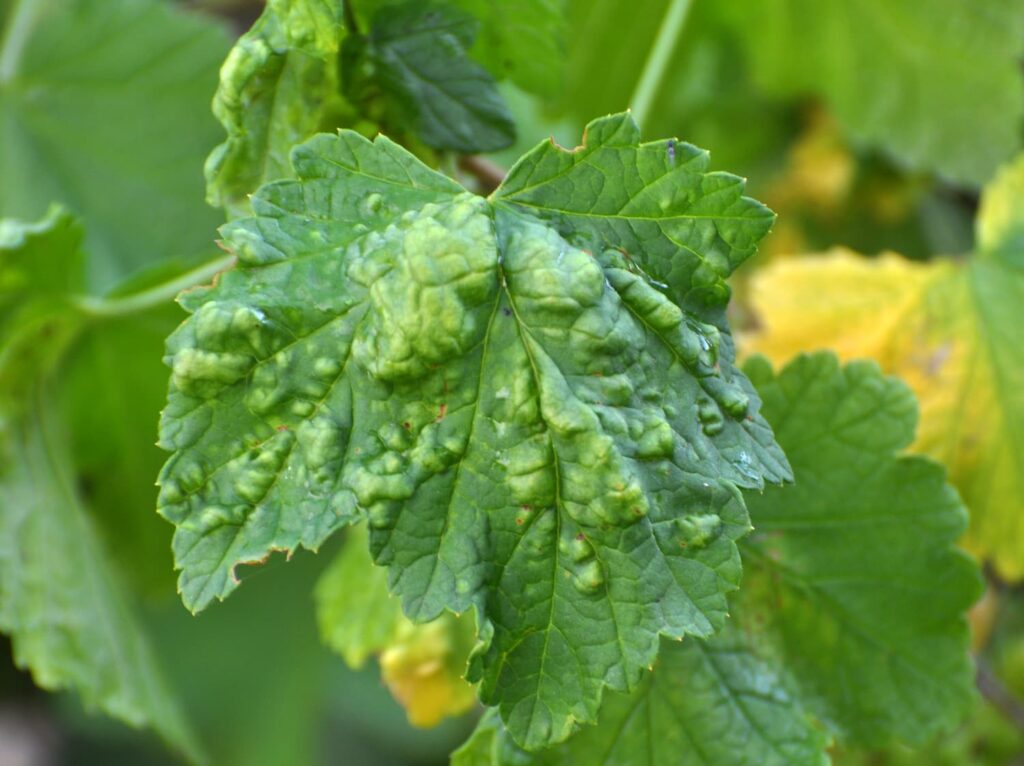During cool spring weather, Oak Leaf Blister nearly all oak varieties are subject to this fungal disease that causes raised, circular spots on the oak tree’s leaf surfaces.
What is Oak Leaf Blister?
Oak leaf blister is a fungal disease that affects oak trees, specifically those in the Quercus genus. It is caused by the fungus Taphrina caerulescens, which infects the leaves of the tree and causes them to develop small, blister-like swellings. The disease is most commonly found on red oak and black oak trees, but it can also affect other species of oak trees.
Common Oak Leaf Blister Symptoms
The symptoms of oak leaf blister can be quite dramatic, with affected leaves appearing distorted and deformed. The blisters, which are actually small, swollen pockets of tissue, can be up to 1/4 inch in diameter and are typically found on the upper surface of the leaves. The blisters are often accompanied by yellow or reddish-brown spots on the underside of the leaves. In severe cases, the disease can cause the leaves to wilt and die, leading to defoliation of the tree.
- Small 1/4-inch swollen blisters found on the upper surface of the leaves.
- Yellow or reddish-brown spots on the underside of the leaves.
- Wilted leaves.
- Defoliation.
Where Is It Found?
Oak leaf blister is most commonly found in the eastern United States, but it can also occur in other parts of the country and in Europe. The disease is most prevalent in areas with cool, moist spring weather, as the fungus thrives in these conditions. It is most commonly found on young oak trees, as they are more susceptible to infection, but it can also affect older trees.
How Does It Spread?
The fungus that causes oak leaf blister is spread by spores that are carried by the wind or by insects. Once the spores land on the leaves of an oak tree, they can germinate and begin to grow. The fungus then begins to produce spores of its own, which can spread the disease to other oak trees in the area.
Prevention and Treatment
There are several ways to control oak leaf blister and prevent it from spreading. One of the most effective methods is to remove and destroy infected leaves as soon as they are noticed. This can help to prevent the fungus from producing more spores and spreading the disease to other parts of the tree or to other trees in the area.
Another method of control is to apply a fungicide to the affected tree. There are several different fungicides available that are effective against oak leaf blister, and they can be applied as a spray or as a soil drench. It is important to follow the instructions on the label when using fungicides, as overuse or improper application can be harmful to the tree.
In addition to these control measures, there are several cultural practices that can help to prevent oak leaf blister from occurring. One of the most important is to ensure that the tree is properly fertilized and watered. A healthy tree is less likely to be affected by the disease. Pruning infected branches and providing good air circulation can also help to prevent the fungus from spreading.
It is important to keep in mind that oak leaf blister is not a deadly disease, and most oak trees are able to recover from an infection. While the disease can cause defoliation and weaken the tree, it is generally not fatal. However, if the tree is already stressed or weakened by other factors, such as drought or pests, the disease could potentially cause more serious damage.
Conclusion
In conclusion, oak leaf blister is a fungal disease that affects oak trees and is characterized by the development of small, blister-like swellings on the leaves. It is most commonly found in the eastern United States and is most prevalent in areas with cool, moist spring weather. The disease can be controlled through the removal of infected leaves, the application of fungicides, and proper cultural practices such as fertilization, watering, and pruning. While oak leaf blister can weaken the tree and cause defoliation, it is generally not fatal. Looking for other Tree Diseases?
Want To Talk To A Certified Arborist?
Do you have more questions about your oak tree? Do you have oak wilt on the trees on your property? Do you have Tree Disease on your property in Texas? Call us today at (817) 799-7808 to talk to our Tree Care Experts.
North Texas Tree Care
As a North Texas-based tree care company, Oakwilt.org does more than just provide industry-leading tree care, we’re here to serve our beloved community. By giving our North Texas trees proper care and maintenance through routine tree check-ups and treating them for oak wilt when necessary, we can promote a greener, more sustainable North Texas community. For help with tree disease treatment and tree nutrition, tree care and tree insect management, soil conditioning, and more, contact our ISA Certified Arborists to get started.
Oakwilt.org is a full-service sustainable tree care company offering residential and commercial tree services in Dallas, Waco, Austin, Fort Worth, San Marcos, San Antonio, DFW, and more. Contact our North Texas tree care experts at (817) 799-7808 and enjoy 5-star rated tree care customer service and the best tree health services in North Texas!
To learn more about North Texas Tree Diseases: Actinopelte Leaf Spot, Anthracnose, Bacterial Leaf Scorch, Crown Gall, Dutch Elm Disease, Hypoxylon Canker, Oak Leaf Blister, Oak Wilt, Rapid Oak Decline, Sudden Oak Death, call our North Texas team of Arborist
at (817) 799-7808 or fill out the contact form.
We’re a little different than the average tree care company.
Learn more about Oakwilt.org ISA Certified Arborists!
Our North Texas-based tree doctors can explain how sustainable tree care services add more value to your properties.
Find out more today by giving us a call today.

